Mr. He Rulong has served as the Chinese Ambassador in Iceland since February 2022. After two and a half years, he and his family are happily settled, and although the two countries are vastly different in most regards, he firmly believes they can learn a thing or two from each other. After all, the distance between the central points of Iceland and China happens to be 7,777 kilometres—a very lucky number, according to the ambassador.
“The first time I travelled to Iceland was twenty years ago, in 2004, when I came here with a Chinese delegation, spending three nights here. I was immediately impressed with the country and its beautiful landscape, so completely different from China,” the ambassador explains. “When I got the notification that I had been appointed to this post in February 2022, I was so thrilled, as was my wife, who also had previously travelled to Iceland in 2003. She had a lovely impression of Iceland and knew quite a few things about the country from her Icelandic flatmate during her studies in the UK. So, I have my whole family with me here, and simply put, we love it.”
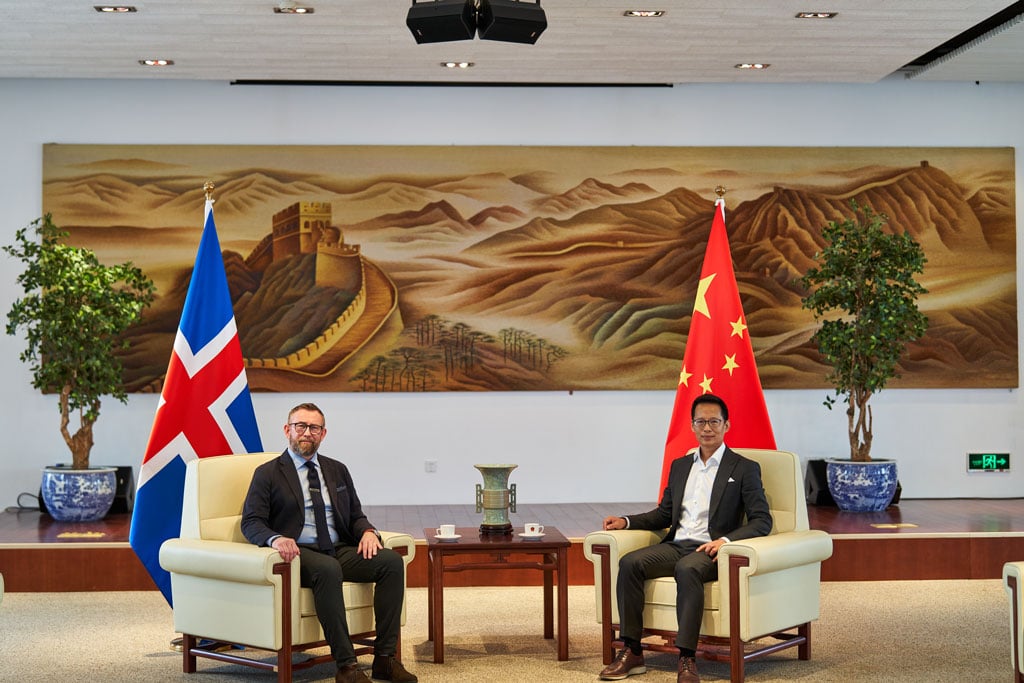
the reception hall of the Embassy of China in Reykjavik, Iceland.
A Booming Interest in Iceland
According to Mr. He, Iceland is a very different country in the eyes of the Chinese people—not simply because it is an island in the middle of the North Atlantic Ocean and thus geographically distant from China, but also because of the natural vistas evident in recent years from popular Hollywood blockbusters featuring scenes shot in Iceland. This, among other things, has piqued quite an interest in Iceland among the Chinese, and as a result, the popularity of Iceland as a destination has surged among Chinese tourists. Consequently, Iceland fell—somewhat unexpectedly—into the Top 10 list of coveted destinations among Chinese travellers for the years 2023 and 2024. “This is why you can see quite a few Chinese walking the streets of Reykjavík and traveling around Iceland right now,” he adds.
While discussing the apparent differences between the two countries, Mr. He concedes that parts like the heavily populated area around the Eastern seaboard, with its widespread greenery and tall trees, are quite different from any part of Iceland. “However, I visited the Central Highlands and was enchanted by the mountains and the beautiful colours. Interestingly, in the Northwestern part of China, there are actually very similar terrains with striking natural colours.”

tremendous boost to the mutual understanding of the countries and to bilateral
relationships.”
Direct Flight Will Make a World of Difference
Considering the increasing Chinese interest in Iceland as a destination, the news of the prospect of direct flights between China and Iceland will undoubtedly be welcomed. This is clearly an important matter to the Ambassador.
“You know, the distance between the center of China and the center of Iceland has been calculated thoroughly, and it so happens that the distance is 7,777 kilometers. Four sevens, a very lucky number,” he adds with a smile. “It’s quite far, and currently the travel is not easy, with people having to make a stopover and a flight connection somewhere in mainland Europe. But the hope is that when there is a direct flight, we will be able to connect our two countries further in terms of business, the flow of people, and more tourists coming both ways. That will be a tremendous boost to the mutual understanding of the countries and to bilateral relationships.”
The Ambassador adds that ever since his appointment to the post, establishing a direct flight between Iceland and China has remained one of his top priorities, maybe even the single most important priority, as he considers it of paramount importance in terms of relations between the two countries. “I’m certainly losing no time in working with the Chinese authorities as well as Icelandic authorities and businesses to help make the necessary arrangements to realize this vision. I would say that we are making good progress, and I hope it will happen even sooner than the three-to-five-year plan currently on the table.”
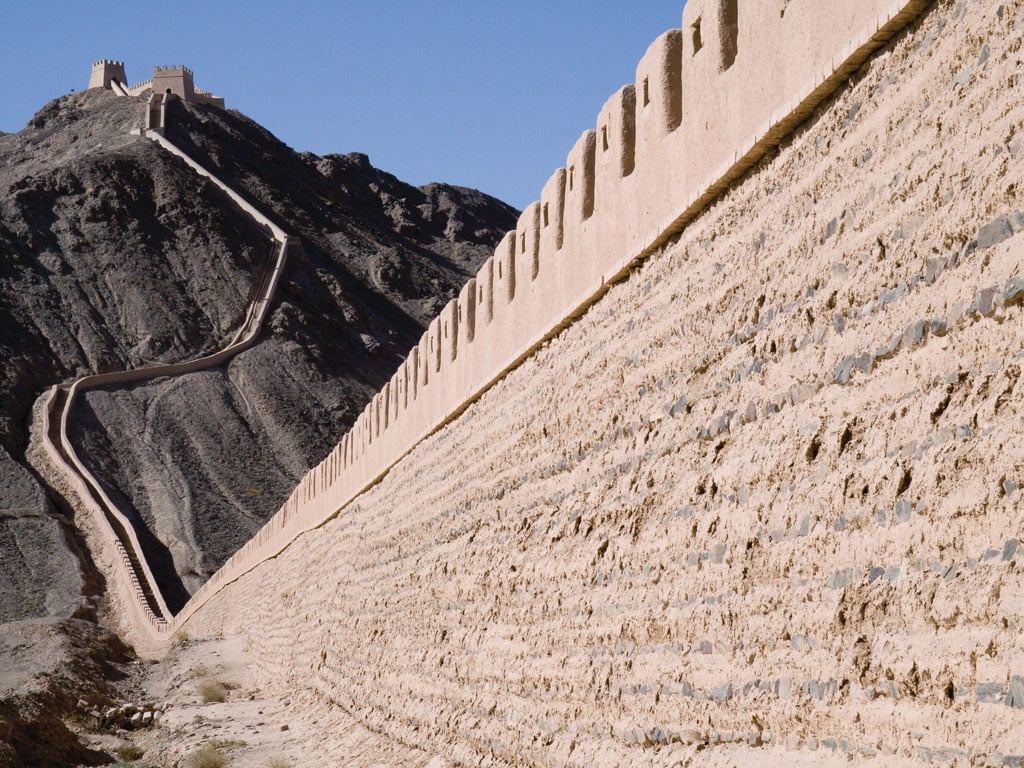
systems, and population, this has not stopped Iceland and China from coming together,
exchanging views and contributing to growing relations. We view Iceland as a very
valuable partner in terms of international relations,” says Mr. He Rulong.
Cooperation in the Arctic
Regarding the relationship between the two countries, Iceland and China have both actively participated in the Arctic Circle Assembly, the largest international gathering focused on the Arctic region, its future, opportunities, and challenges. “I think the subject of the Arctic is a very important one in our bilateral relationship, and there are some commonalities between China and Iceland when it comes to that particular region. Iceland is a member of the Arctic Council, while China is an observer of the council, and we thank Iceland for their support. Also, I think that Iceland was the first Arctic country to sign a bilateral agreement with China on cooperation in Arctic affairs. This demonstrates the good understanding between our two countries. China believes that the Arctic issue is one affecting each and every country in the world when it comes to climate change, Arctic shipping lanes, etc. Accordingly, many countries would be interested in, even concerned with, this issue, and China is a stakeholder in Arctic affairs. So, I am grateful for the openness of the Icelandic government regarding cooperation with China, and the way our two countries take climate change very seriously has put them on a firm foundation for further cooperation.
Mr. He also cites the Aurora Arctic Observatory in Kárhóll, near Akureyri, as a good symbol of the cooperation between the two countries. “This project is open to researchers, not only from China and Iceland, and in a nutshell, it is a platform for all scientists from all countries to come and research Arctic affairs. So that is another example.”

mountain bikers alike. Should He Rulong’s vision of direct flights between Iceland and
China materialise, an even greater number of Chinese tourists are to be expected in
Iceland, Landmannalaugar included.
Making a Geothermally Powered Difference
It is obvious that Mr. He is very enthusiastic about further strengthening relations between his homeland and the country he currently resides in. “Our relationship is mutually complementary, and while we differ in size, social systems, and population, this has not stopped Iceland and China from coming together, exchanging views, and contributing to growing relations. We view Iceland as a very valuable partner in terms of international relations. For example, we see the strength of your country when it comes to technology regarding the harnessing of geothermal energy.” Mr He explains that China is currently in the process of a green transition and has an ambitious goal called 30/60, which implies that 2030 will be a carbon peak, and 2060 will be the year the country reaches carbon neutrality. “Therefore, we need to employ a lot of green technology to push China further into development mode and alter the country’s energy mix. Actually, geothermal cooperation has been a highlight in the collaboration between our two countries, and one such example is the joint cooperation project between Arctic Green of Iceland and Sinopec from China.
They set up a joint venture 18 years ago, and it has been tremendously successful. On one part, it is generating revenue from the get-go, and secondly, it has helped China to turn approximately 60 cities and counties into smog-free locations. We changed our coal-based heating system into a geothermal one, making our urban areas cleaner and more liveable—something that has proved tremendously important. This project has actually been hailed by the U.N. as one of the success stories in reducing carbon dioxide emissions in a global context. So, every year we receive many Chinese official delegations visiting Iceland because they all want to see the geothermal power stations in your country, for instance, the one in Hellisheidi, just to learn from your expertise and the potential of geothermal cooperation.”
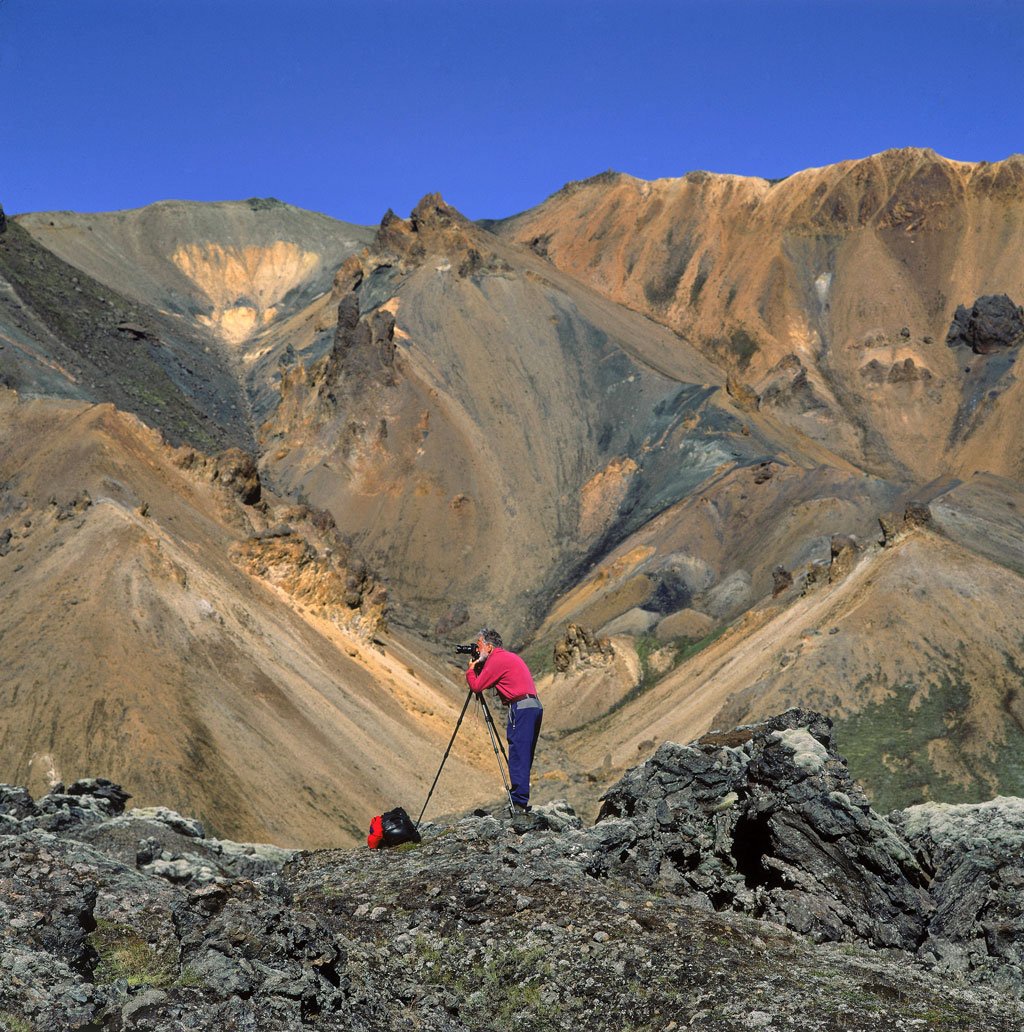
Commonalities Despite Differences
The Ambassador seems adamant that despite the vast differences between the two countries—Chinese civilization has a history that runs back 5000 years, while Iceland was discovered around 1150 years ago, and the Chinese population is approximately 1.4 billion while Iceland counts barely 385,000 people—they can still learn quite a few things from one another.
“Of course, China is an ancient civilization, and one that we are proud to say is the only civilization in the world that is uninterrupted throughout history. And just like you Icelanders, who can read your own ancient texts because the language has hardly changed since settlement times, in China we can read scripts from 2000 years ago.
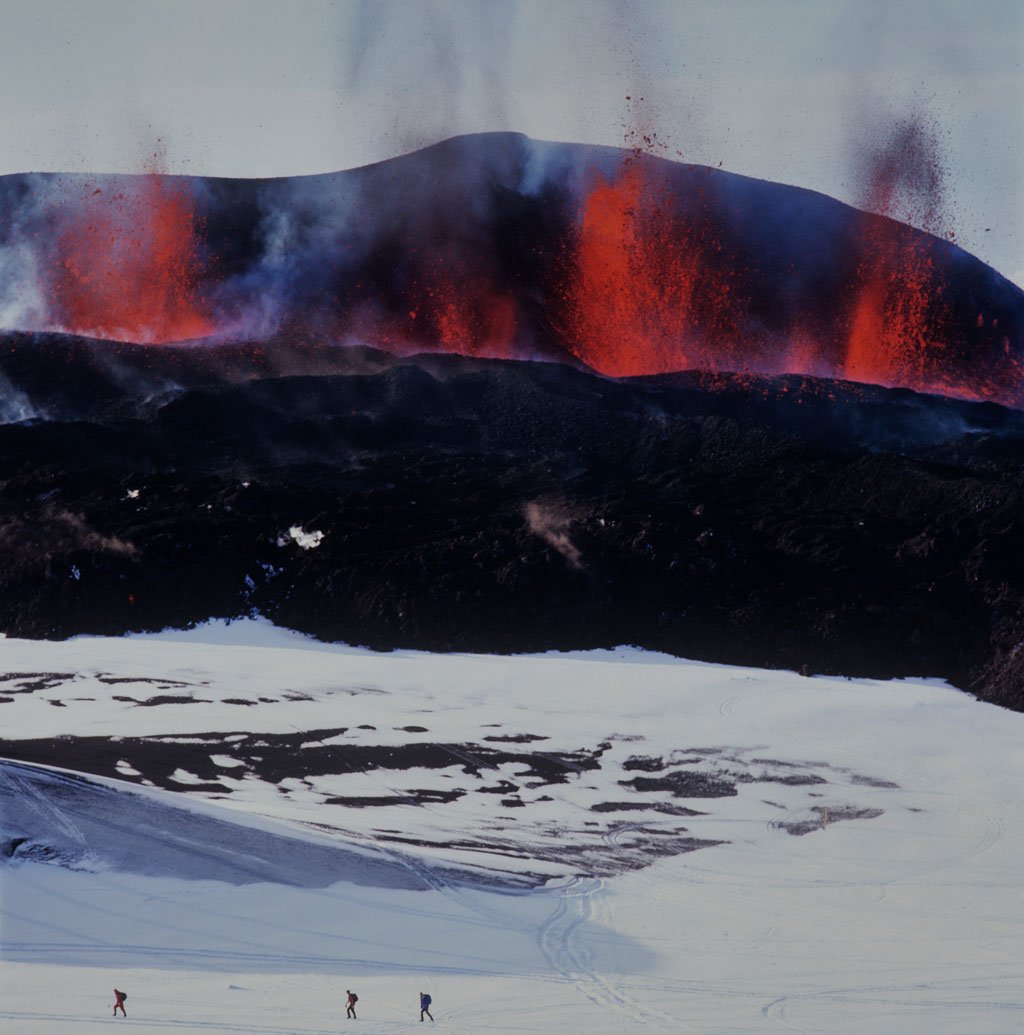
making the Ambassador’s stay thus far in Iceland even more eventful, with 8 eruptions
taking place since March 19, 2021.
Regarding what China and Iceland have in common, another thing has struck me deeply since my arrival, and that is the fact that both countries have managed to rise from being among the least developed and poor ones to being leading countries in a relatively short span of time. In Iceland, you have made giant strides only since the Second World War, from being among the least developed nations in Western Europe to being a leading model in many aspects in the world. You have one of the highest GDP per capita globally, and in China it’s the same. In the short span of about 40 years and more, since the announcement of the Reform and Opening-up Policy, we successfully lifted about 800 million Chinese people out of poverty, improving their living conditions dramatically and providing them with better food. Today, China is the second-largest economy in the world, and people have better life expectancy and are more confident in the future of the country. This is the commonality that always strikes me, despite the many differences between the two countries with such different histories. We are two nations completely different from what we were only three or four generations ago.”
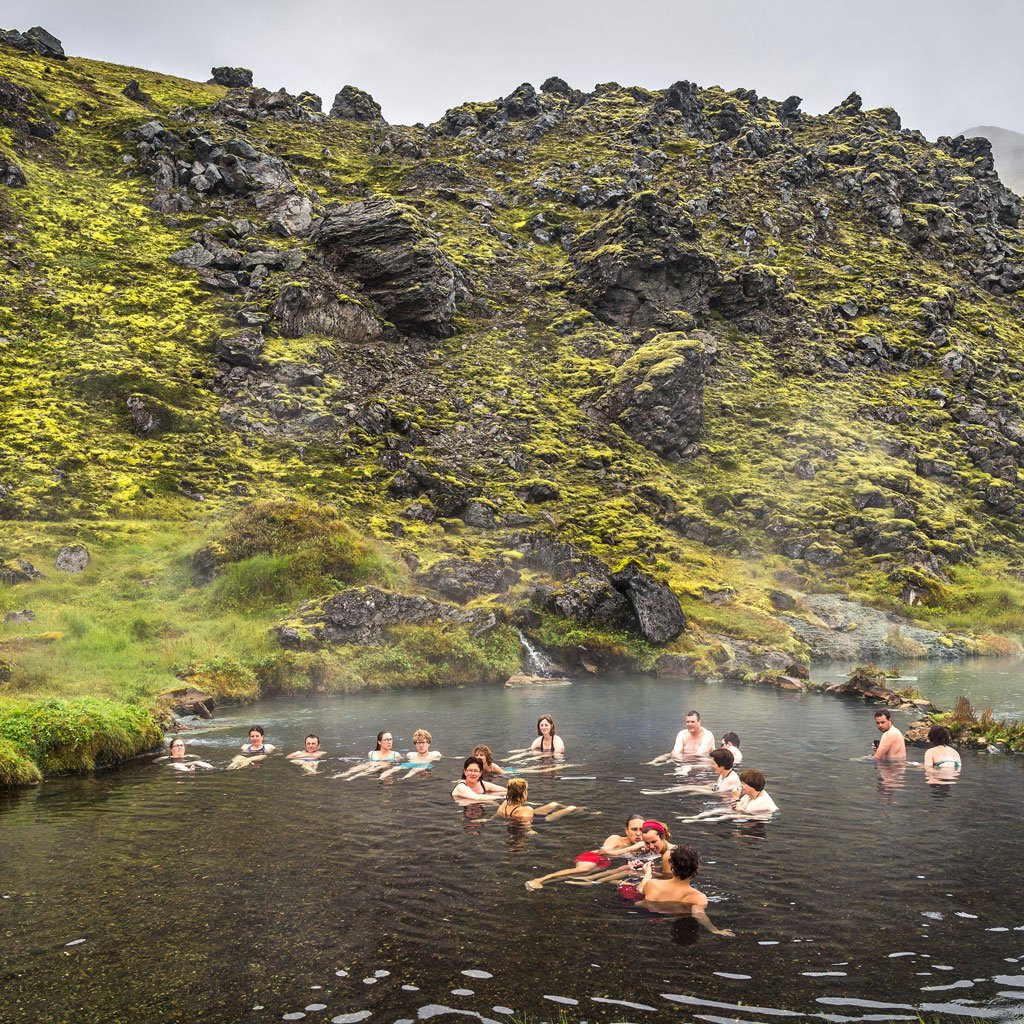
Cooperation with Icelandic scientists in harnessing geothermal energy has yielded impressive results in China.
Apart from planning to expand cooperation between China and Iceland in various capacities, Mr. He is also planning his own personal activities for the short, Icelandic summer. A sports enthusiast himself, Mr. He is an avid runner and has already done a full marathon in the Reykjavík Marathon last year, as well as the Puffin Run and the Suzuki Midnight Run. “This year, I think I’m going to let a half-marathon suffice. My family and I have plans to visit some beautiful spots in the vicinity of Reykjavík, where everything is so accessible and within reach, as well as around your beautiful country. I already did the excursion of hiking the Fimmvörðuháls trail from Skógar to Þórsmörk and enjoyed that tremendously. I would like to repeat that experience.”

impressed by the area, claiming the hypnotic colours of the mountains remind him of
certain locations in Northwestern China.
A Surprising Number of Chinese Signatures
Finally, to counter the recent local news that foreign tourists seem to have a slightly waning interest in Iceland as a destination, the Ambassador has a reassuring story. “I was traveling in and around the Eastern fjords, an area that is reported to be the least travelled part of the country. But to my surprise, in the gestabók [guest book] where I stayed, I found so many Chinese signatures! According to what they wrote, they had been traveling around Iceland for 16 or 18 days, so it appears they were doing a trip around the entire country. This reinforces my conviction that the Chinese love Iceland because it is such a different country and will be visiting in ever greater numbers. Now that I know how beautiful it is, I’m looking forward to them experiencing it.”
Written by Jon Agnar Olason
Photos Páll Stefánsson





